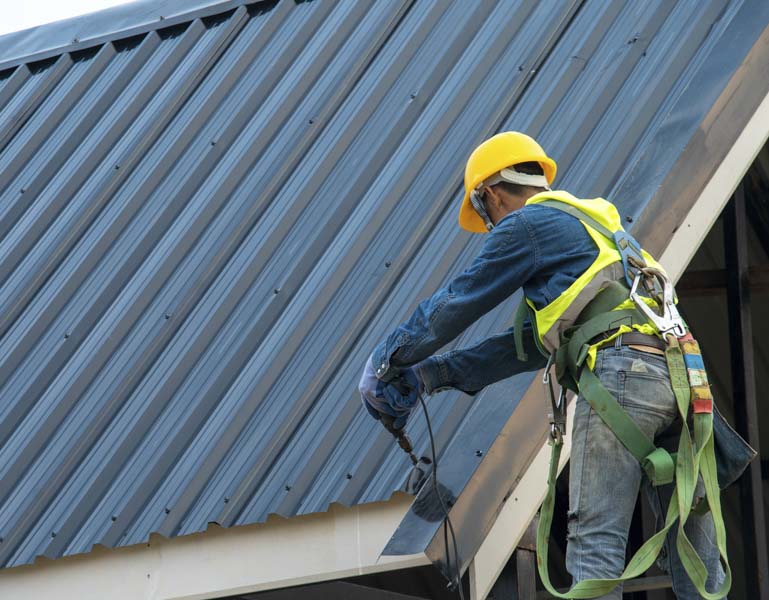The average cost to install a metal roof $13,200, with prices varying considerably depending on the type of material and the size of your roof. Metal is a popular roof material, and it’s hard to beat with advantages like long lifespans, durability, and weather resistance.
Factors in Calculating the Costs of a Metal Roof
Several factors must be considered regarding metal roof installation costs. The materials, roof size, and labor costs are the most significant factors influencing costs.
Metal Roofing Material Choices
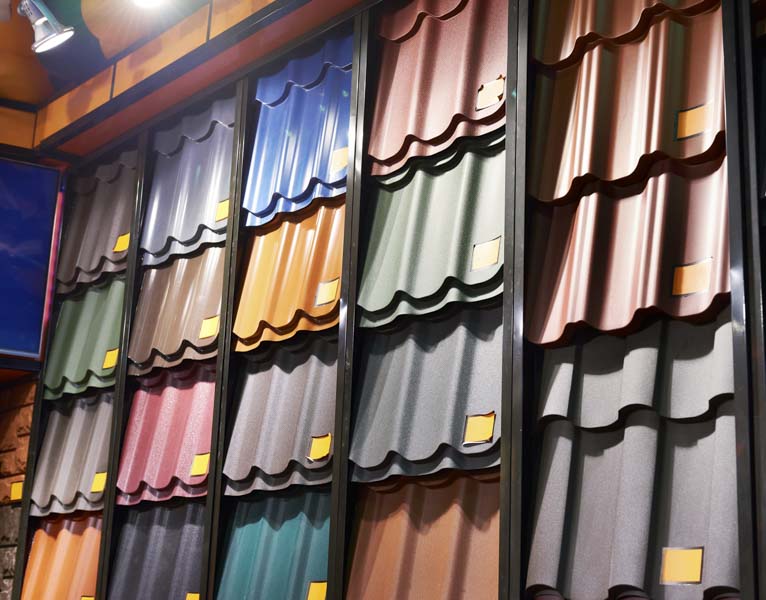
Metal roof panels come in various shapes and sizes and are made of different types of metal. Both of these factors influence costs.
You can choose from shingles, panels, and tiles with various textures, seams, and profiles. Here are the most common types used:
- Galvanized steel
- Galvalume steel
- Aluminum
- Stainless steel
- Tin
- Copper
- Zinc
Roof Size and Complexity
The size and complexity of your home’s roof are another significant factor determining the cost. Generally, the larger your roof, the more it will cost, but the design and shape can also impact the cost of materials.
Labor Costs and Installation Complexity
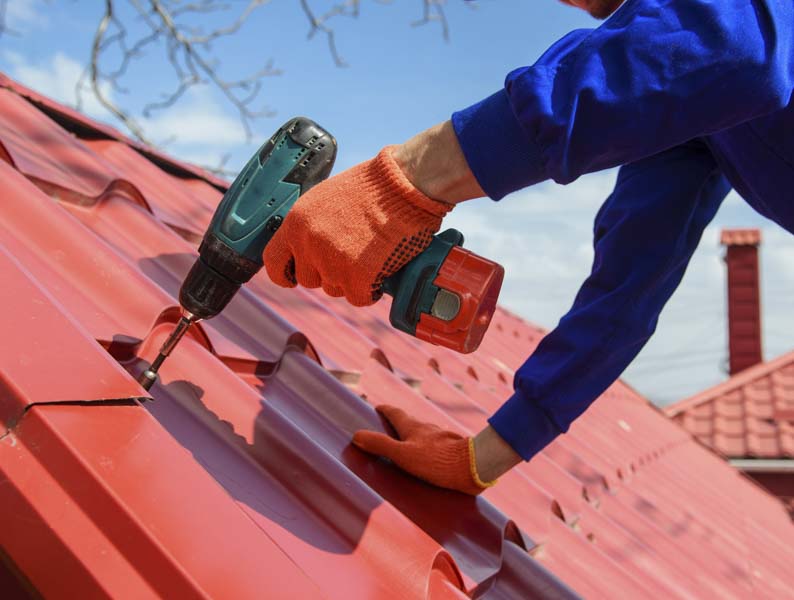
Labor costs for roof installation are impacted by the pitch of your roof, accessibility, and how many stories your home has. Features like dormers, skylights, chimneys, and other architectural features can increase the installation cost.
Additional Components and Accessories
You may also need to consider other components and accessories, including the following:
- Underlayment
- Flashing
- Trim
- Drip edges
- Ventilation components
- Snow guards
- Heat tape for roofs
- Screws and washers
Geographic Location and Climate
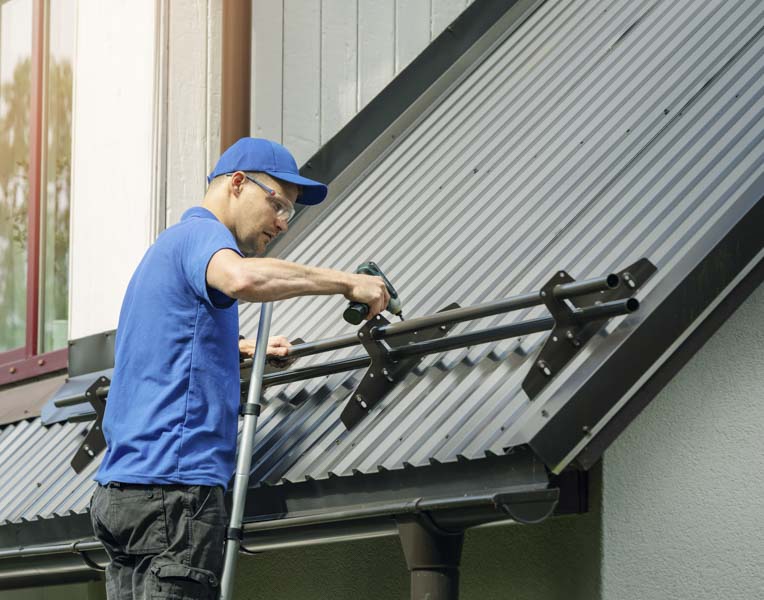
The local climate, weather conditions, and regional building codes all play a part in determining metal roof costs. For example, areas with heavy snowfall may require snow guards, and hurricane-prone areas may need additional fasteners.
Metal Roof Types and Prices
The style and type of metal significantly impact prices.
Comparing Different Metal Roofing Types
Metal roof panel costs differ depending on the material and style. Here are the most common types.
| Metal roofing type | Description |
| Standing seam (concealed fastener panels) | Vertical metal panels with raised seams that interlock. |
| Rib panels (exposed fastener panels) | Vertical interlocking metal panels with exposed fasteners. |
| Metal shingles and tiles | Individual shingles or tiles in various shapes, including diamond, square, or rectangular. |
| Corrugated metal | Ribbed sheets of metal with repeating patterns of ridges and grooves. |
Average Prices for Various Metal Roofing Materials
| Metal roofing type | Average price per square foot |
| Standing seam | $8 to $14 |
| Metal shingles and tiles | $6 to $14 |
| Corrugated metal | $4 to $7 |
| Aluminum rib panels | $9 to $12 |
Premium Options and Customization Costs
Some metal roofing features have a higher price tag due to the quality, design, and additional labor or manufacturing processes required to make them.
Examples of customization include patinas on copper tiles, custom thicknesses, specialty profiles, and unique color options.
Cost of Metal Roofing Per Foot
Metal Roofing Price per Square Foot
The cost of metal roofing panels per square foot varies depending on the type of roofing and the material that it’s made from.
Here are the average roofing prices for various roofing materials, including installation.
| Metal roofing material | Average price per square foot |
| Galvanized steel | $4 to $17 |
| Galvalume steel | $4 to $9 |
| Aluminum | $6 to $21 |
| Stainless steel | $7 to $20 |
| Tin | $10 to $26 |
| Zinc | $14 to $21 |
| Copper | $20 to $40 |
Factors Influencing Per Square Foot Costs
There are many types of metal roofing, and choosing the right one for your home can be overwhelming. When comparing residential roofing prices, be sure to consider the following factors:
- Metal type
- Gauge or thickness
- Coating and finish
- Panel style and profile
- Finish style
- Accessibility of material
- Local market conditions
- Product warranties
Generally, prices aren’t affected by your color choice.
Additional Metal Roof Costs and Considerations
In addition to the primary factors influencing metal roof costs, here are a few secondary factors to consider.
Roof Insulation Costs
During roof replacement, you may want to add extra insulation. Some options include rigid foam board insulation, spray foam insulation, and fiberglass batt insulation.
Don’t forget about your attic. Find out how much attic insulation you really need.
Ventilation and Underlayment Expenses
Consider the costs of underlayment when you’re calculating a roof replacement. Roofing underlayment costs less than $2 per square foot, depending on factors like thickness, temperature, and water resistance.
Removal and Disposal of Old Roofing
The cost to remove and dispose of old roofing is often included in quotes. If you tackle this job yourself, remember that metal roofing can be upcycled or recycled.
Building Permits and Regulations
In many municipalities across the United States, a roof replacement requires a building permit and inspection. Permits typically cost $150 to $500.
DIY Metal Roof Installation vs. Hiring a Professional
Metal roof installation is a job for experienced DIYers and may not be suitable for everyone. Explore the pros and cons of DIY versus professional metal roof installation.
Pros and Cons of DIY Metal Roofing
DIY metal roof costs are much lower than hiring a professional. If you have the necessary skills, you can work at your own pace and have greater control of the process.
On the downside, some of the most significant disadvantages of DIY installation are safety concerns and lack of experience. Roofing is dangerous work, especially with steep pitches, and mistakes can lead to numerous problems that could compromise the integrity of your home.
Benefits of Professional Metal Roof Installation
Professional installation has several advantages. Roofers have the expertise to do the job quickly and efficiently, and you don’t have to worry if it was done right. You can also take advantage of material warranties with professional installation.
For a financial bird’s eye view of roof installation, check out our guide to the average roof replacement cost!
How to Save Money on a Metal Roof
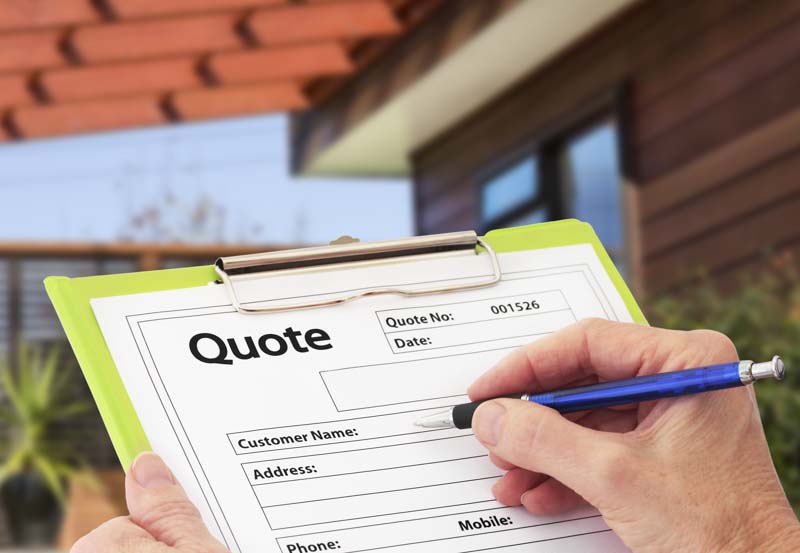
Your roof replacement costs can be lowered by using these money-saving tips.
Obtaining Multiple Quotes
Obtain at least three estimates from reputable roofers. That way, you can compare prices to negotiate a better rate.
Financing Options for Metal Roofing
The best ways to finance a metal roof are to refinance your mortgage or take out a home equity line of credit. Talk to your banker to find out which option is best for you.
Seasonal Discounts and Promotions
Roofing companies offer seasonal discounts for work during the slow season. You can also search online for promotions throughout the year to see if companies in your area have any specials.
Proper Maintenance to Extend Roof Lifespan
Regular cleaning, tree trimming, and roof inspections are all part of routine maintenance, leading to longer lifespans for metal roofs.
When You Should Install a Metal Roof
On average, homeowners have to replace their roofs every 25 to 50 years, depending on the type of roof materials, climate, and the quality of installation.
Signs Indicating the Need for a Metal Roof Replacement
Here are the most common signs that you need a new roof.
Water Leaks and Ceiling Stains
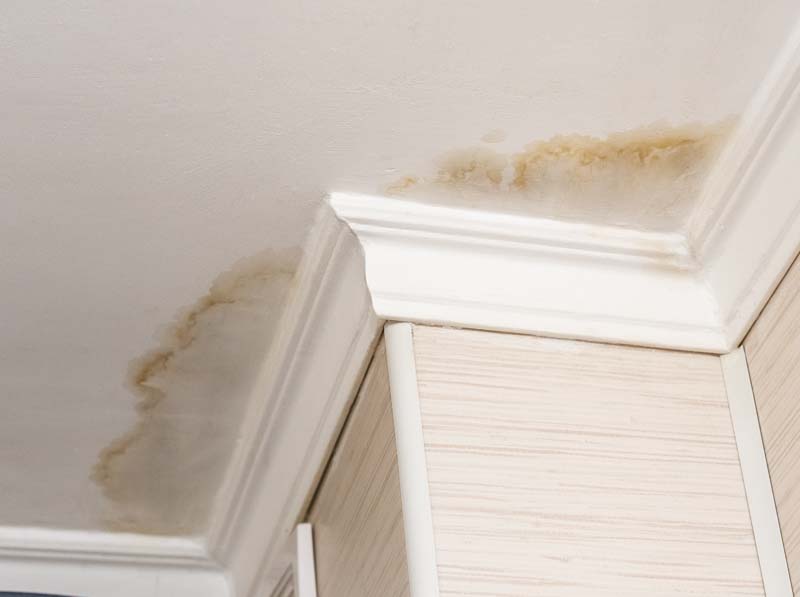
Two telltale signs that indicate your roof is in trouble and may need replacement are water leaks and ceiling stains. These problems could be due to damaged flashing, deterioration of materials, or loose seams.
Rust and Corrosion
Certain climates are hard on metal roofs, leading to rust and corrosion. While this problem initially affects your roof’s visual appeal, it will eventually lead to other issues as the material deteriorates.
Missing or Damaged Roofing Material
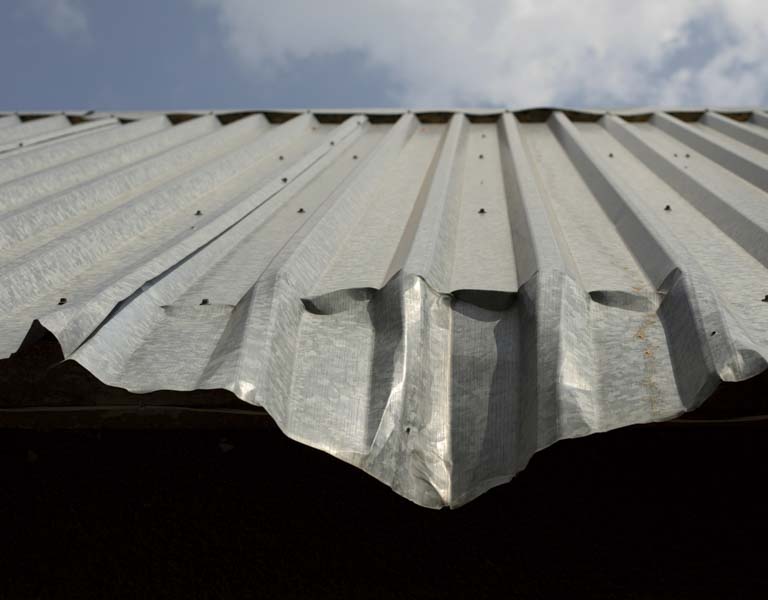
Severe weather can lead to missing or damaged panels on your metal roof. If it’s just one or two panels, they are replaceable, but when it affects a significant portion of your roof, it’s an indication that it’s time for a new one.
Ideal Times for Metal Roof Installation
The best time to replace a metal roof is late summer and fall. Autumn days are typically cooler and more predictable, and the summer heat has subsided. However, fall is the busiest time of year for roofers, and you can save money by having your roof replaced during the slow season.
Spring and Summer Installation
There are a few problems with spring and summer metal roof installations. In the spring, it rains frequently, so it can be hard to time roof replacement around precipatory events. Summer is a good time to install a roof, but heat can be problematic. Metal roofing can get up to 145°F (63°C) in the hot summer sun.
Roof Replacement During Home Renovation
One of the best times to replace your roof is when renovating your house, especially if the sheathing needs to be completely torn off and replaced along with the roof materials.
Weather Considerations for Roof Replacement
Weather is the primary factor that determines the best time of year to replace your roof. Here’s how weather can affect roof installations.
Winter Installation Challenges
Every season comes with its own challenges. You could encounter problems like heavy snow accumulation and sub-zero temperatures in winter. With the combination of shortened daylight hours and cold temperatures, winter isn’t the best time to replace a roof.
Hurricane-Prone Regions and Metal Roofs
Metal roofs are a good choice for hurricane-prone regions, but some installation challenges must be considered. If you live in an area susceptible to strong weather events, ensuring that your metal roof is installed according to local building regulations is even more critical.
The Benefits of Metal Roofing
Metal roofing is one of the most popular types of roof materials, and there are plenty of good reasons why.
Longevity and Durability of Metal Roofs
Longevity should be considered in the cost of replacing a roof with metal. Metal roofs last 40 to 100 years, depending on the metal type and quality. That’s over twice as long as asphalt shingles, which are about the same price point as metal roofs.
Energy Efficiency and Cost Savings
Metal roofs don’t absorb heat, and many come with energy-efficient coatings or finishes that enhance their solar reflectance and thermal emissivity, lowering your energy costs. Metal roofs can be more affordable than other options, so you may also save money on installation.
Aesthetic and Design Options
Metal roofs come in a wide range of colors to match your personal style, and you can choose from various styles, profiles, textures, and finishes to achieve a unique look for your home.
Environmental Sustainability
Metal roofs have a long lifespan and are fully recyclable at the end of their use, making them eco-friendly.
5 FAQs About the Costs of a Metal Roof
FAQ 1: What Is the Average Cost of a Metal Roof?
The average cost of a metal roof is $13,200, or about $8 to $16 per square foot. Several factors influence the costs, including the quality and type of metal, installation costs, and the complexity of the roof design.
FAQ 2: How Does the Cost of Metal Roofing Compare to Other Roofing Materials?
The two most economical roofing options are metal panels and asphalt shingles. These roofing materials are about 20% of the cost of high-end roof materials like copper and slate tiles.
FAQ 3: Can I Install a Metal Roof Over My Existing Roof?
You can install a metal roof over an existing shingle roof. Since metal roof materials are lightweight, your structure won’t have any problem supporting the extra weight, and you’ll enjoy the benefits of a more durable roof.
FAQ 4: Are There Tax Credits or Incentives for Installing a Metal Roof?
The Metal Roof Tax Credit for 2023 and 2024 allows homeowners to save money on qualified energy-efficient metal roofs.
FAQ 5: Is DIY Metal Roof Installation Recommended for Beginners?
Metal roof installation is an advanced DIY project, so it’s not one of the best projects for beginners. If you DIY this project, you’ll want help from one or two family members or friends. Try to find someone with more experience than you and learn as much as possible about metal roofing before you start.

